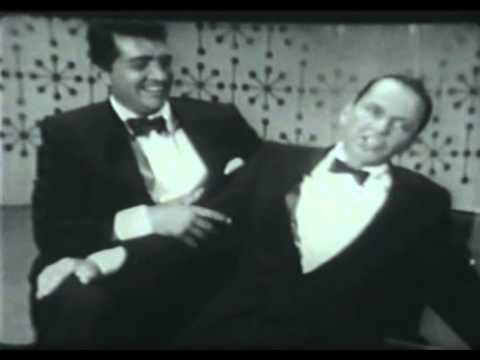Dino and Frank tongue in cheek
Dino & Frank tongue in cheek –
This Is Your Life –
In December 1987, at Chasen’s restaurant in Los Angeles, Frank Sinatra, Sammy Davis, and Dean Martin announced a 29-date tour, called Together Again, sponsored by HBO and American Express. At the press conference to announce the tour, Martin joked about calling the tour off, and Sinatra rebuked a reporter for using the term “Rat Pack”, referring to it as “that stupid phrase”.
Dean Martin’s son, Dean Paul Martin, had died in a plane crash in March 1987 on the San Gorgonio Mountain in California, the same mountain where Sinatra’s mother, Dolly, had been killed in a plane crash ten years earlier. Martin had since become increasingly dependent on alcohol, prescription drugs and was not himself.
Dean had not made a film or recorded since 1984, and Sinatra felt that the tour would be good for him, telling Sammy Davis, “I think it would be great for Dean. Get him out. For that alone it would be worth doing”.
Frank and Sammy still performed regularly, yet had not recorded for several years. Both Sinatra and Martin had made their last film appearances together in 1984’s Cannonball Run II. This marked the trio’s first feature film appearance since 1964’s Robin and the 7 Hoods.
Regarding the tour Dean expressed reservations. wondering whether they could draw as many people as they had in the past. After private rehearsals, at one of which Sinatra and Davis had complained about the lack of black musicians in the orchestra, the tour began at the Oakland-Alameda County Coliseum Arena on March 13, 1988.
To a sold-out crowd of 14,500, Sammy opened the show, followed by Dean and then Sinatra; after an interval, the three performed a medley of songs. During the show, Martin threw a lit cigarette at the audience.
Dean and Frank were best of friends until the end. I recall Deana Martin referring to Frank Sinatra as “Uncle Frank”.
From Wikipedia
This site contains product affiliate links. We may receive a commission if you make a purchase after clicking on one of these links.


